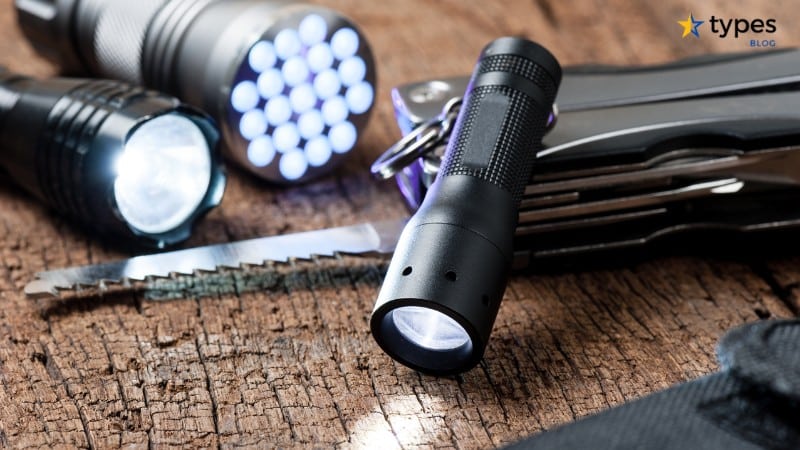Introduction
What Are Flashlights and Their Importance?
Flashlights are portable lighting devices that are commonly used for illumination in situations where there is insufficient or no available light. They are essential tools for various activities and provide a reliable source of light when needed. Whether it’s during power outages, outdoor adventures like camping or hiking, or search and rescue operations, flashlights play a crucial role in ensuring visibility and safety.
Different Types of Flashlights
Flashlights come in various types, each designed for different purposes and environments. Here are some common types:
1. Standard Flashlights: These are the most common flashlights found in households and are typically powered by batteries. They are compact, portable, and suitable for everyday use.
2. Tactical Flashlights: Designed for outdoor and tactical use, these flashlights are more durable, robust, and equipped with features such as impact resistance, water resistance, and brighter illumination. They are commonly used by law enforcement, military personnel, and outdoor enthusiasts.
3. Headlamps: Headlamps are a hands-free option as they are worn on the head or attached to a helmet. They are ideal for activities that require both light and the use of both hands, such as camping, hiking, cycling, and running.
4. Rechargeable Flashlights: These flashlights are equipped with rechargeable batteries that can be recharged using a power source. They are more sustainable and cost-effective in the long run, as they eliminate the need for constantly purchasing disposable batteries.
5. Keychain Flashlights: Keychain flashlights are small and lightweight, designed to be attached to keychains for easy accessibility. They provide a convenient source of light for quick tasks or emergencies.
6. Diving Flashlights: Diving flashlights are specially designed for underwater use. They are waterproof and can withstand high pressures, making them suitable for scuba diving, snorkeling, and other water activities.
7. UV Flashlights: UV flashlights emit ultraviolet light and are used for investigative purposes, such as detecting counterfeit currency, identifying stains, and detecting fluorescent materials.
Each type of flashlight offers unique features and advantages, catering to specific needs and preferences. It’s important to choose the right flashlight for your intended use to ensure optimal performance and reliability.
In conclusion, flashlights are versatile and essential tools that provide portable illumination in various situations. They come in different types, each serving specific purposes and offering different features. Understanding the different types of flashlights available can help users make informed decisions when selecting the appropriate tool for their needs. Whether it’s for emergencies, outdoor activities, or professional use, a reliable flashlight is an invaluable companion.
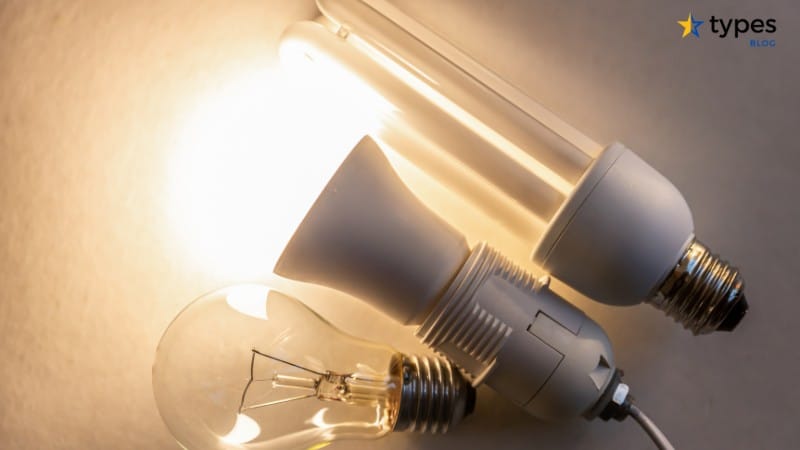
Standard Flashlights
Features and Capabilities of Standard Flashlights
Standard flashlights, as the most common type of flashlight, are designed for general use. They come with a range of features and capabilities that make them suitable for various situations. Here are some key features and capabilities of standard flashlights:
1. Light Source: Standard flashlights typically use incandescent or LED bulbs to provide illumination. Incandescent bulbs produce a bright, yellowish-white light, while LED bulbs offer a brighter, whiter light.
2. Power Source: These flashlights can be powered by disposable or rechargeable batteries, providing flexibility in terms of convenience and cost.
3. Size and Weight: Standard flashlights come in different sizes and weights, allowing users to choose the one that best suits their needs. Compact and lightweight options are available for easy storage and portability.
4. Durability: Standard flashlights are typically designed to withstand rough handling and outdoor conditions. They are often made from durable materials such as aluminum or impact-resistant plastic.
5. Beam Distance and Intensity: The beam distance and intensity of a standard flashlight can vary depending on the model. Some flashlights offer a focused beam that can reach long distances, while others provide a wider beam for broader illumination.
Incandescent vs LED bulbs in Standard Flashlights
One important consideration when choosing a standard flashlight is the type of bulb it uses. Here’s a comparison between incandescent and LED bulbs:
Incandescent Bulbs
- Incandescent bulbs produce a warm, yellowish-white light.
- They have a shorter lifespan compared to LED bulbs.
- Incandescent bulbs require more power and may drain batteries faster.
- These bulbs are more prone to breakage due to the delicate filament inside.
LED Bulbs
- LED bulbs offer a brighter, whiter light.
- They have a longer lifespan compared to incandescent bulbs, making them more cost-effective in the long run.
- LED bulbs are energy-efficient and require less power, resulting in longer battery life.
- Tese bulbs are more durable and shock-resistant, making them suitable for rugged use.
In summary, standard flashlights are versatile and widely used for general lighting needs. They come with different features and capabilities, allowing users to choose the one that best suits their requirements. The choice between incandescent and LED bulbs depends on factors such as light color preference, lifespan, power efficiency, and durability.
Mini or Keychain Flashlights
Compact Size and Portability of Mini Flashlights
Mini or keychain flashlights are a smaller and more portable version of standard flashlights. They are designed to be attached to a keychain or easily carried in a pocket, making them convenient for quick access to light in various situations. Here are some features and capabilities of mini flashlights:
1. Size: Mini flashlights are compact and lightweight, measuring around 2 to 4 inches in length. Their small size makes them easy to carry and store, without taking up much space.
2. Power Source: These flashlights are typically powered by small button-cell batteries, which are readily available and easy to replace. The low-power consumption of mini flashlights allows the batteries to last longer.
3. Light Output: Mini flashlights provide a low-lumen output, which is sufficient for tasks such as finding keyholes or reading in dark environments. They are not designed for long-distance illumination or heavy-duty use.
4. Keychain Attachment: The keychain attachment allows users to keep the flashlight easily accessible at all times. It can be attached to a keyring, backpack, or zipper, ensuring that light is always within reach.
Common Uses and Applications of Mini Flashlights
Mini flashlights are commonly used in various situations where a small, portable light source is needed. Here are some common uses and applications of mini flashlights:
1. Finding Keyholes: The primary use of mini flashlights is to assist in unlocking doors or finding keyholes in the dark. The compact size and low output make them ideal for this purpose.
2. Emergencies: Mini flashlights can be handy during power outages or emergencies when larger flashlights may not be readily available. Having a mini flashlight on a keychain ensures that you always have a backup light source.
3. Outdoor Activities: Mini flashlights are useful for outdoor activities such as camping, hiking, or walking at night. They can provide enough light to navigate in low-light conditions without the need for a larger, bulkier flashlight.
4. Everyday EDC: Many people choose to carry a mini flashlight as part of their everyday carry (EDC) items. It can be useful for tasks such as checking dark corners, reading menus in dim lighting, or searching for items in a bag or purse.
In conclusion, mini or keychain flashlights offer compact size and portability, making them convenient for quick access to light in various situations. They are commonly used for finding keyholes, emergencies, outdoor activities, and everyday carry. While they may not provide the same power and range as standard flashlights, their small size and low-lumen output make them suitable for specific tasks and situations.
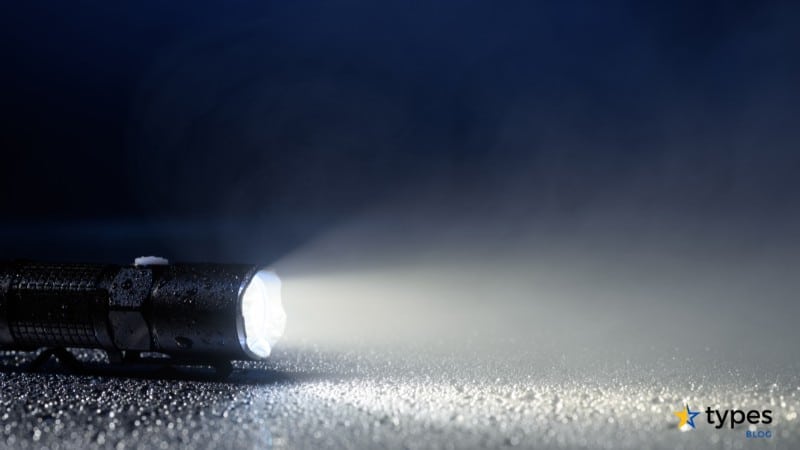
Compact Flashlights
Features and Advantages of Compact Flashlights
Compact flashlights are a smaller and more portable option compared to standard flashlights. Despite their smaller size, they offer a range of features and advantages that make them a popular choice for both everyday use and emergency situations. Here are some key features and advantages of compact flashlights:
- Size and Portability: Compact flashlights are designed to be small and lightweight, making them easy to carry in pockets, purses, or backpacks. Their compact size makes them ideal for travel or activities that require minimal gear.
- Light Source: These flashlights use efficient LED bulbs to provide bright illumination. LED bulbs offer a long lifespan, energy efficiency, and a brighter, whiter light compared to incandescent bulbs.
- Power Source: Compact flashlights are typically powered by disposable or rechargeable batteries, providing flexibility depending on the user’s preference and convenience.
- Durability: Despite their small size, compact flashlights are often built to withstand rough handling and outdoor conditions. They are made from durable materials such as aluminum or impact-resistant plastic, ensuring their longevity.
- Beam Distance and Intensity: The beam distance and intensity of a compact flashlight may vary depending on the model. However, many compact flashlights offer a focused beam that can reach a significant distance, making them suitable for outdoor activities or emergency situations.
Choosing the Right Compact Flashlight for Your Needs
When selecting a compact flashlight, it’s important to consider your specific needs and requirements. Here are some factors to consider:
- Lumens: Lumens refer to the brightness of the flashlight. Higher lumens generally provide a brighter light. Consider how bright you need the flashlight to be for your intended tasks or situations.
- Beam Distance: Determine how far the flashlight needs to illuminate. A longer beam distance may be necessary for activities such as hiking or camping.
- Run Time: Consider the run time of the flashlight, which refers to how long it can continuously provide light before the batteries need to be replaced or recharged. This is especially important for emergency situations or prolonged use.
- Battery Type: Determine whether you prefer a compact flashlight that uses disposable batteries or one that is rechargeable. Disposable batteries can provide convenience as they are easily replaceable, while rechargeable ones may be more cost-effective in the long run.
- Additional Features: Some compact flashlights may come with additional features such as adjustable focus, different lighting modes, or built-in charging capabilities. Consider these features based on your specific needs and preferences.
In conclusion, compact flashlights are a versatile and portable lighting option suitable for various situations. They offer a range of features and advantages, including size and portability, efficient LED bulbs, durability, and beam distance options. When choosing a compact flashlight, consider factors such as lumens, beam distance, run time, battery type, and additional features to find the one that best meets your needs.
Medium-sized Flashlights
Power and Output of Medium-sized Flashlights
Medium-sized flashlights offer a balance between compactness and brightness, making them a popular choice for various applications. These flashlights typically have a higher power output compared to their smaller counterparts, providing more illumination for a wider range of tasks. Here are some key factors to consider when it comes to the power and output of medium-sized flashlights:
- Lumens: Medium-sized flashlights can range from several hundred to several thousand lumens. Higher lumens generally result in a brighter light output, which can be beneficial for activities that require more substantial illumination.
- Light Source: Like compact flashlights, medium-sized flashlights often utilize LED bulbs for their energy efficiency and superior brightness. LED bulbs have a longer lifespan compared to traditional incandescent bulbs, reducing the need for frequent replacements.
- Power Source: Medium-sized flashlights can be powered by various sources, including disposable batteries or rechargeable ones. Rechargeable flashlights, in particular, are a popular choice for those who seek a more economical and environmentally friendly option.
- Beam Distance and Focus: Medium-sized flashlights typically offer a longer beam distance compared to compact flashlights, allowing the light to reach further distances. Some medium-sized flashlights may also have adjustable focus capabilities, enabling users to switch between a wide beam for broader coverage and a narrow beam for focused illumination.
Best Situations for Using Medium-sized Flashlights
Medium-sized flashlights are versatile tools that can be used in a range of situations. Here are some scenarios where medium-sized flashlights excel:
- Outdoor Activities: Medium-sized flashlights are ideal for outdoor activities such as camping, hiking, or fishing. Their higher power output and longer beam distance make them suitable for illuminating larger areas or navigating through dark environments.
- Emergency Preparedness: Medium-sized flashlights are often recommended for emergency preparedness kits due to their combination of power and portability. Whether you’re preparing for a power outage or other emergency situations, having a reliable medium-sized flashlight can provide essential illumination.
- Home Use: Medium-sized flashlights are handy tools to have around the house for everyday tasks. They can be used for tasks such as searching for items in dark corners, inspecting the fuse box, or navigating during a power outage.
- Work and Professional Use: Medium-sized flashlights are commonly used by professionals in various fields, including law enforcement, security, construction, and maintenance. Their higher power output and durability make them suitable for demanding work environments.
In conclusion, medium-sized flashlights offer a balance between compactness and power, making them versatile tools for a range of applications. They provide a higher power output compared to compact flashlights, resulting in brighter illumination and a longer beam distance. Medium-sized flashlights are especially well-suited for outdoor activities, emergency preparedness, home use, and work/professional settings. When choosing a medium-sized flashlight, consider factors such as lumens, light source, power source, and beam distance to ensure it meets your specific needs and requirements.
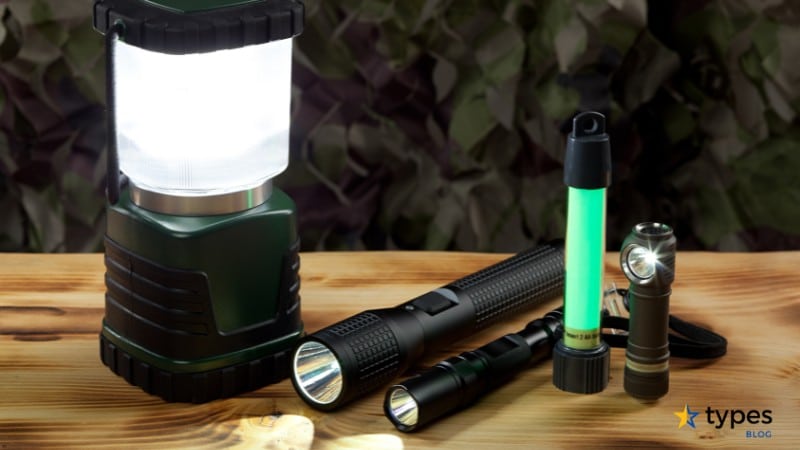
Large or Tactical Flashlights
Characteristics and Functionality of Tactical Flashlights
Tactical flashlights are specially designed for use by law enforcement and military personnel. These flashlights are built with durability in mind, using sturdy materials that can withstand rough handling and harsh conditions. They often feature specialised functionalities that make them useful in tactical situations. Here are some key characteristics and functionalities of tactical flashlights:
- Specialised Features: Tactical flashlights may have a variety of specialised features that enhance their functionality in tactical situations. These features can include strobe modes, which can disorient an attacker, and crenulated bezels that can be used for self-defense.
- Multiple Output Levels: Tactical flashlights often come with multiple output levels, allowing the user to adjust the brightness of the light based on their needs. This feature can be useful in various tactical scenarios where different levels of illumination are required.
- Beam Distance and Intensity: Tactical flashlights are designed to have a powerful, focused beam that can reach a significant distance. This feature helps law enforcement and military personnel to see clearly in low-light or dark environments.
- Mounting Options: Many tactical flashlights offer mounting options, allowing them to be attached to weapons or gear. This enables hands-free use and easy access to the flashlight in high-stress situations.
- Durability: Tactical flashlights are built to withstand rigorous use and extreme conditions. They are made from rugged materials such as aluminum or impact-resistant plastics, ensuring their longevity even in challenging environments.
Battery-powered Flashlights
Disposable vs Rechargeable Batteries for Flashlights
When it comes to battery-powered flashlights, there are two main options for the type of batteries used – disposable and rechargeable. Each type has its own advantages and considerations. Here’s a comparison between the two:
Disposable Batteries:
- Common Types: Disposable batteries for flashlights typically include AA, AAA, C, and D batteries, among others. These batteries are widely available and can be purchased at most stores.
- Convenience: Disposable batteries are convenient because they can be easily replaced when they run out of power. This is especially useful in situations where there is no access to electricity or a charging source.
- Shelf Life: Disposable batteries have a longer shelf life compared to rechargeable batteries. This means that they can be stored for longer periods without losing their charge.
- Cost: Disposable batteries are generally cheaper upfront compared to rechargeable batteries. However, over time, the cost of continuously buying new batteries can add up.
- Environmental Impact: Disposable batteries contribute to environmental waste because they are thrown away after use. Improper disposal of batteries can also have harmful effects on the environment.
Rechargeable Batteries:
- Common Types: Rechargeable batteries for flashlights include lithium-ion, nickel-metal hydride (NiMH), and nickel-cadmium (NiCd) batteries. These batteries can be recharged using a compatible charger.
- Long-term Cost: While rechargeable batteries may have a higher initial cost, they can be more cost-effective in the long run. Users can recharge the batteries multiple times, reducing the need to purchase new batteries regularly.
- Environmental Impact: Rechargeable batteries are more environmentally friendly compared to disposable batteries. They can be reused multiple times, which reduces waste and decreases the overall environmental impact.
- Performance: Rechargeable batteries generally have a lower self-discharge rate, meaning they can hold a charge for longer periods even when not in use. This makes rechargeable batteries more reliable during emergencies or situations where immediate access to power may not be available.
- Charging Considerations: Rechargeable batteries require a compatible charger to recharge them. It’s important to have access to a power source to charge the batteries when needed.
USB Rechargeable Flashlights
Advantages and Convenience of USB Rechargeable Flashlights
USB rechargeable flashlights have gained popularity in recent years due to their convenience and versatility. These flashlights come with built-in rechargeable batteries that can be easily powered up using a USB port. Here are some advantages and benefits of USB rechargeable flashlights:
- Cost Efficiency: While USB rechargeable flashlights may have a higher upfront cost compared to traditional battery-powered flashlights, they can save you money in the long run. Instead of constantly buying disposable batteries, you can recharge the built-in battery of a USB flashlight using a USB cable and power source. This reduces waste and saves you money on battery replacements.
- Environmental Friendly: USB rechargeable flashlights are a more sustainable option compared to disposable battery-powered flashlights. By minimizing the use of disposable batteries, these flashlights help to reduce the amount of harmful waste that ends up in landfills. This makes them an environmentally friendly choice for those looking to reduce their carbon footprint.
- Convenience: USB rechargeable flashlights offer great convenience, especially if you have access to USB ports in your home, car, or office. These flashlights can be easily charged using a USB cable that can be plugged into a wall charger, power bank, computer, or even a car charger. This means you can charge your flashlight wherever you have access to a USB port, ensuring that it is always ready for use.
- Versatility: USB rechargeable flashlights often come with multiple charging options, allowing you to charge them using different power sources. Some models even offer solar charging capabilities, which makes them ideal for outdoor use. This versatility ensures that you can always find a way to charge your flashlight, even in situations where traditional power sources may not be available.
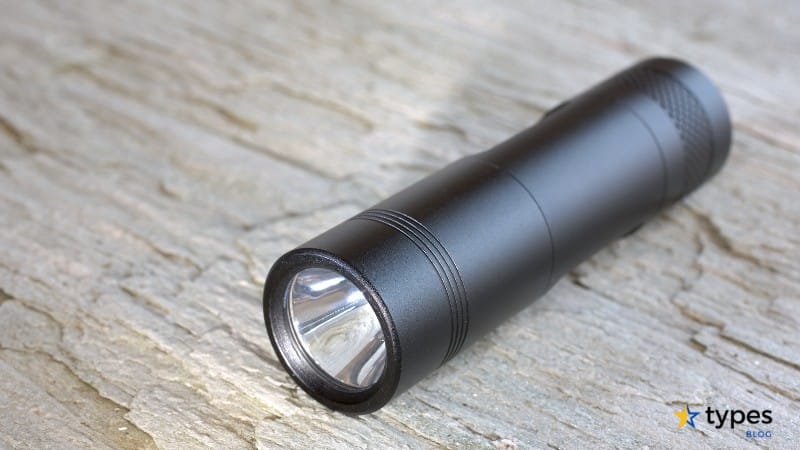
Solar-powered Flashlights
Benefits and Limitations of Solar-powered Flashlights
Solar-powered flashlights are another alternative to traditional battery-powered flashlights. These flashlights use solar cells to convert sunlight into electricity, which is stored in a rechargeable battery. Here are some benefits and limitations of solar-powered flashlights:
- Renewable Energy Source: Solar-powered flashlights rely on the sun’s energy, making them a sustainable and renewable energy source. By harnessing solar power, these flashlights reduce the reliance on disposable batteries and help minimize environmental impact.
- Energy Efficiency: Solar-powered flashlights are energy efficient as they do not require electricity from the grid or disposable batteries. They can be charged during the day using sunlight and provide illumination during the night. This makes them ideal for outdoor activities and off-grid situations.
- Long-term Cost Savings: While solar-powered flashlights may have a higher upfront cost compared to battery-powered flashlights, they offer long-term cost savings. By utilizing free solar energy, they eliminate the need for purchasing and replacing batteries, saving you money over time.
- Limited Charging Capacity: One limitation of solar-powered flashlights is their charging capacity. The amount of sunlight available and the size of the solar cell determine how quickly the flashlight can charge and how long it can hold a charge. In situations where sunlight is limited or if you need extended illumination, solar-powered flashlights may not be the most reliable option.
- Weather Dependent: Solar-powered flashlights rely on sunlight, making them weather dependent. They may not charge efficiently on cloudy days or in areas with limited sunlight. However, some solar-powered flashlights have backup charging options, such as USB ports, to mitigate this limitation.

